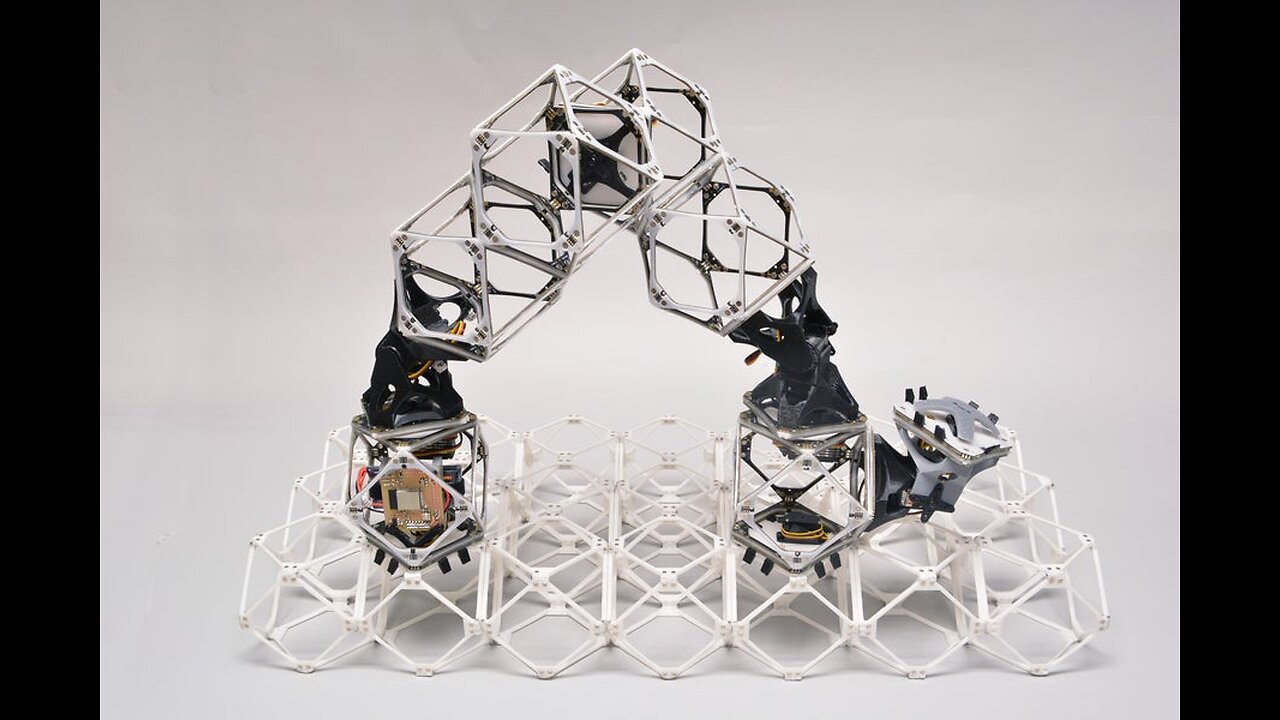Premium Only Content

Researchers use AI to identify similar materials in images - MIT News
🥇 Bonuses, Promotions, and the Best Online Casino Reviews you can trust: https://bit.ly/BigFunCasinoGame
Researchers use AI to identify similar materials in images - MIT News
A robot manipulating objects while, say, working in a kitchen, will benefit from understanding which items are composed of the same materials. With this knowledge, the robot would know to exert a similar amount of force whether it picks up a small pat of butter from a shadowy corner of the counter or an entire stick from inside the brightly lit fridge. Identifying objects in a scene that are composed of the same material, known as material selection, is an especially challenging problem for machines because a material’s appearance can vary drastically based on the shape of the object or lighting conditions. Scientists at MIT and Adobe Research have taken a step toward solving this challenge. They developed a technique that can identify all pixels in an image representing a given material, which is shown in a pixel selected by the user. The method is accurate even when objects have varying shapes and sizes, and the machine-learning model they developed isn’t tricked by shadows or lighting conditions that can make the same material appear different. Although they trained their model using only “synthetic” data, which are created by a computer that modifies 3D scenes to produce many varying images, the system works effectively on real indoor and outdoor scenes it has never seen before. The approach can also be used for videos; once the user identifies a pixel in the first frame, the model can identify objects made from the same material throughout the rest of the video. The researchers' technique can also be used to select similar materials in a video. The user identifies a pixel in the first frame (red dot in the far-left image on the yellow fabric) and the system automatically identifies objects made from the same material throughout the rest of the video.
Image: Courtesy of the researchers In addition to applications in scene understanding for robotics, this method could be used for image editing or incorporated into computational systems that deduce the parameters of materials in images. It could also be utilized for material-based web recommendation systems. (Perhaps a shopper is searching for clothing made from a particular type of fabric, for example.) “Knowing what material you are interacting with is often quite important. Although two objects may look similar, they can have different material properties. Our method can facilitate the selection of all the other pixels in an image that are made from the same material,” says Prafull Sharma, an electrical engineering and computer science graduate student and lead author of a paper on this technique. Sharma’s co-authors include Julien Philip and Michael Gharbi, research scientists at Adobe Research; and senior authors William T. Freeman, the Thomas and Gerd Perkins Professor of Electrical Engineering and Computer Science and a member of the Computer Science and Artificial Intelligence Laboratory (CSAIL); Frédo Durand, a professor of electrical engineering and computer science and a member of CSAIL; and Valentin Deschaintre, a research scientist at Adobe Research. The research will be presented at the SIGGRAPH 2023 conference. A new approach Existing methods for material selection struggle to accurately identify all pixels representing the same material. For instance, some methods focus on entire objects, but one object can be composed of multiple materials, like a chair with wooden arms and a leather seat. Other methods may utilize a predetermined set of materials, but these often have broad labels like “wood,” despite the fact that there are thousands of varieties of wood. Instead, Sharma and his collaborators developed a machine-learning approach that dynamically evaluates all pixels in an image to determine the material similarities between a pixel the user selects and all other regions of the image. If an image contains a table and two chairs, and the chair legs and tabletop are made of the same type of wood, their model could accurately identify those similar regions. Before the researchers could develop an AI method to learn how to select similar materials, they had to overcome a few hurdles. First, no existing dataset contained materials that were labeled finely enough to train their machine-learning model. The researchers rendered their own synthetic dataset of indoor scenes, whi...
-
 9:29
9:29
AlaskanBallistics
6 hours ago $2.30 earnedWyoming Suppressors and Rifles at Shot Show 2025
40K2 -
 1:06:40
1:06:40
Donald Trump Jr.
10 hours agoThe Left is Taking one L After Another, Live with Michael Knowles | Triggered Ep. 217
150K103 -
 47:17
47:17
Kimberly Guilfoyle
10 hours agoWoke Gets DOGE’d, Live with AJ Rice & Jarrett Stepman | Ep. 197
112K41 -
 20:11
20:11
Candace Show Podcast
8 hours agoBecoming Brigitte: Candace Owens x Xavier Poussard | Ep 6
168K307 -
 8:25:38
8:25:38
Dr Disrespect
13 hours ago🔴LIVE - DR DISRESPECT - ELDEN RING DLC - REVENGE
179K21 -
 54:22
54:22
LFA TV
1 day agoThe End of the Trans-Atlantic Alliance | TRUMPET DAILY 2.17.25 7PM
36.5K6 -
 55:56
55:56
BIG NEM
11 hours agoUGLY COCO: The Rapper Who’s Tried EVERY PSYCHEDELIC 🌌
12.2K1 -
 1:42:51
1:42:51
2 MIKES LIVE
9 hours ago2 MIKES LIVE #181 Deep Dive Monday!
21.6K3 -
 1:57:43
1:57:43
Quite Frankly
10 hours ago"Low Tide at The Pier: Munich Tears" 2/17/25
30.8K17 -
 27:44
27:44
The Based Mother
10 hours ago $0.56 earnedBOOK BAN LIES. Karen England and the MSM fairy tale that books are being “banned” by fascists
16.1K3